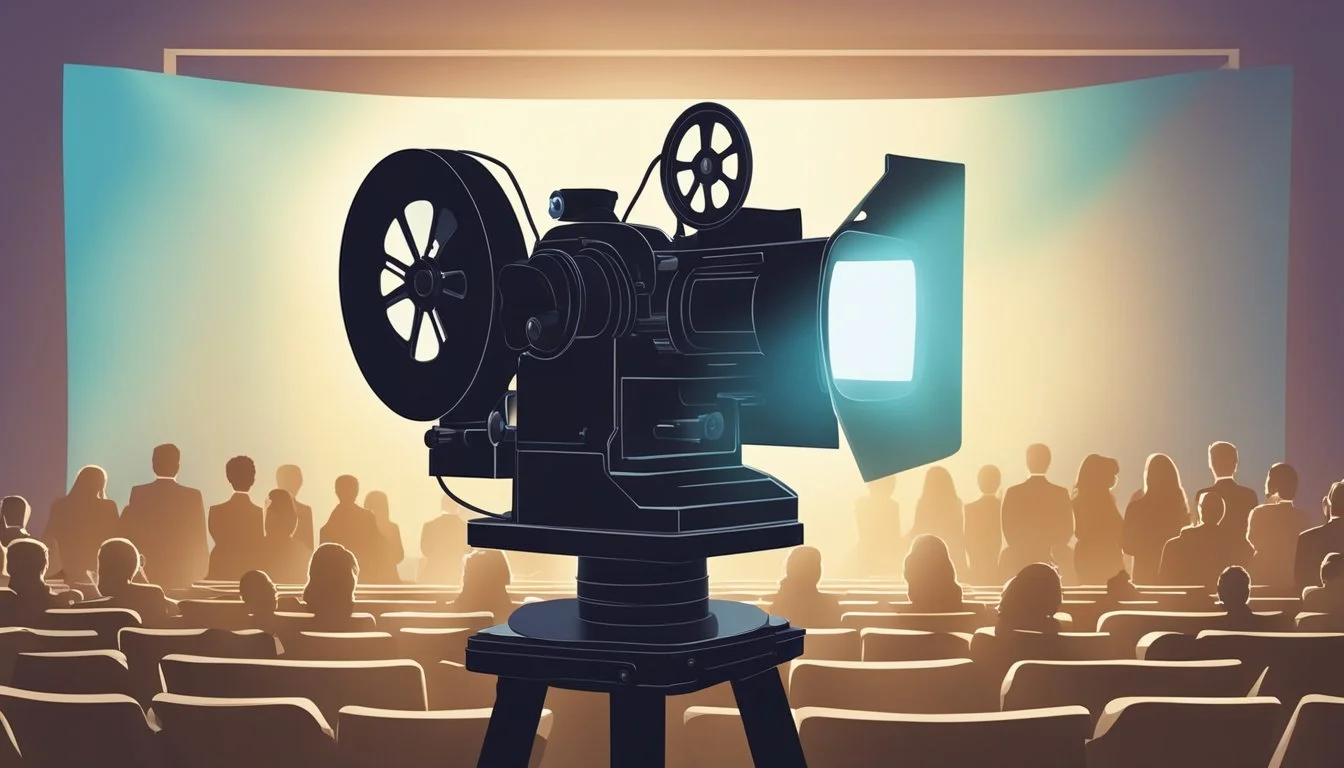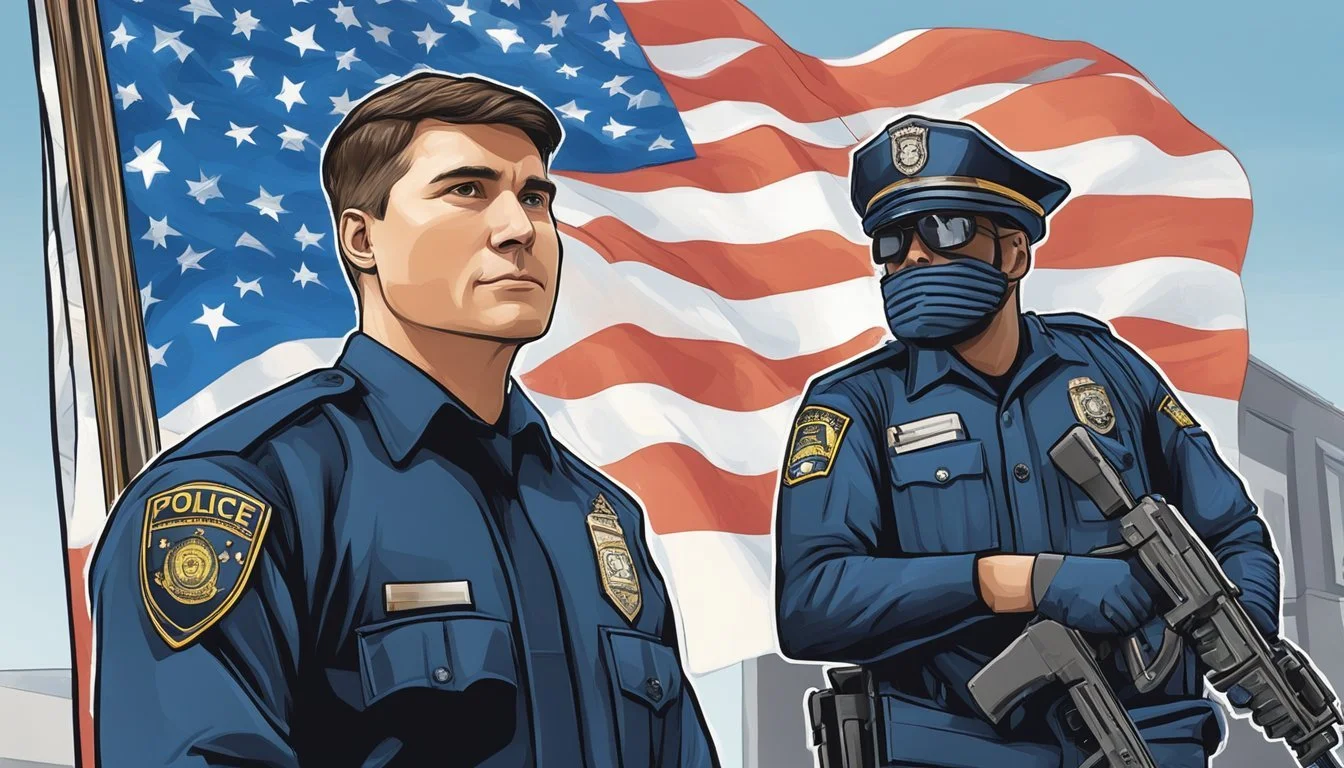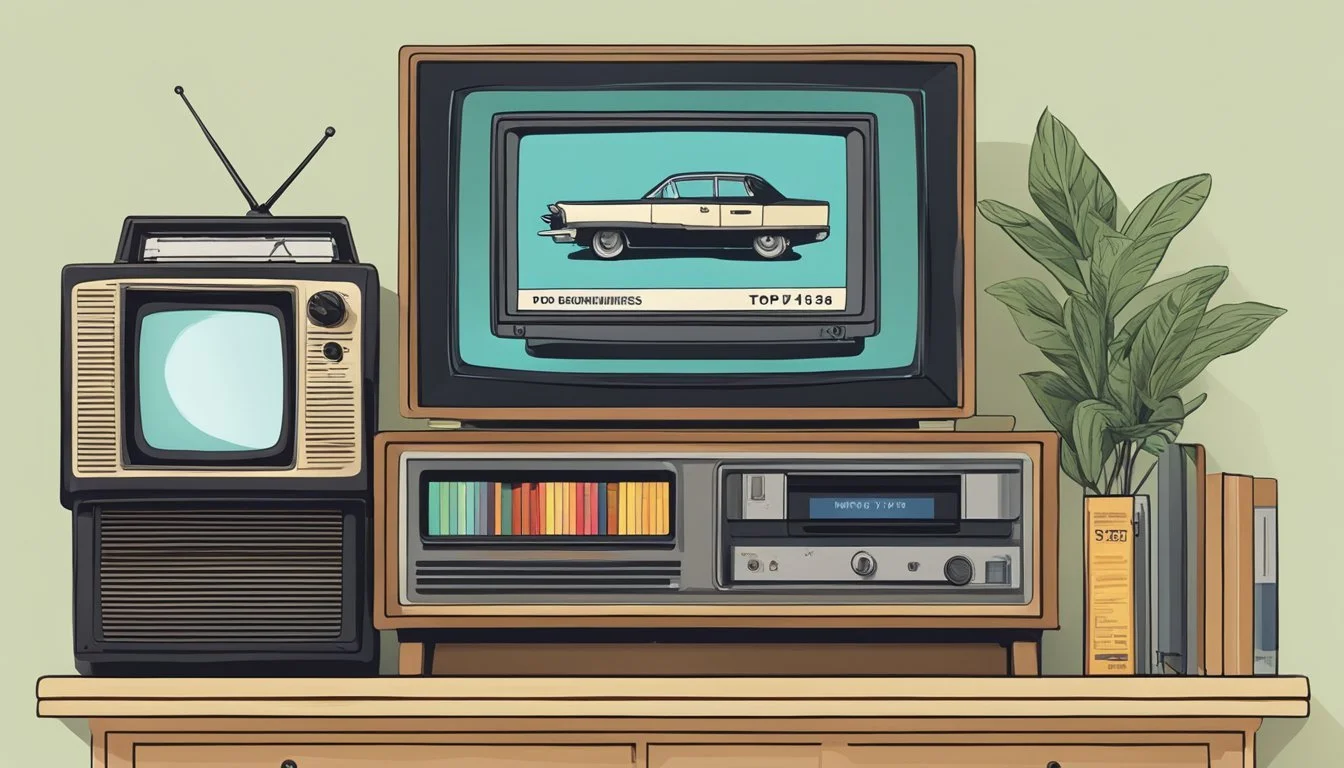Top Documentaries of 1996
Essential Viewing from a Landmark Year in Film
The year 1996 marked a significant period for documentary filmmaking. Audiences were treated to a diverse range of non-fiction works that explored various aspects of society, culture, and human experience. These documentaries shed light on important issues and provided in-depth examinations of fascinating subjects.
Several documentaries from 1996 continue to be regarded as influential and impactful works in the genre. These films employed innovative storytelling techniques and tackled thought-provoking topics, leaving a lasting impression on viewers and critics alike. From intimate character studies to broad social commentaries, the top documentaries of 1996 showcased the power of non-fiction filmmaking to educate, inspire, and provoke meaningful discourse.
1) When We Were Kings (1996)
When We Were Kings chronicles the legendary "Rumble in the Jungle" boxing match between Muhammad Ali and George Foreman. Directed by Leon Gast, this documentary captures the electric atmosphere surrounding the 1974 heavyweight championship bout in Zaire.
The film showcases Ali's charismatic personality and tactical brilliance against the favored Foreman. It interweaves fight footage with interviews and cultural context, highlighting the event's significance beyond boxing.
Gast's documentary brings together an array of voices, including musicians James Brown and B.B. King, to paint a vivid picture of the era. The film explores themes of race, politics, and Ali's status as a cultural icon.
When We Were Kings earned critical acclaim for its compelling storytelling and historical insight. It won the Academy Award for Best Documentary Feature in 1996, cementing its place among the year's top documentaries.
The film's delayed release, coming over two decades after the events it depicts, adds a layer of retrospective analysis to its narrative. It stands as a testament to Ali's enduring legacy and the power of sports to transcend cultural boundaries.
2) Microcosmos (1996)
Microcosmos offers a captivating glimpse into the hidden world of insects and small invertebrates. Directed by Claude Nuridsany and Marie Pérennou, this French documentary showcases the intricate lives of creatures often overlooked by humans.
The film employs innovative cinematography techniques to bring viewers face-to-face with its tiny subjects. Specially developed cameras and lenses, created over three years, capture stunning close-up footage of insects in their natural habitats.
Microcosmos unfolds over a 24-hour period in a meadow, compressing time to reveal the dramatic events of insect life. Viewers witness birth, death, predation, and mating rituals in vivid detail.
The documentary eschews traditional narration, relying instead on striking visuals and an evocative musical score to tell its story. This approach immerses audiences in the microcosm of insect life.
Microcosmos received critical acclaim upon release, winning multiple awards at the 1996 French Academy of Cinema Awards. Its unique perspective and technical achievements set a new standard for nature documentaries.
More information on Microcosmos
3) Paradise Lost: The Child Murders at Robin Hood Hills (1996)
Paradise Lost: The Child Murders at Robin Hood Hills examines the trials of three teenage boys accused of murdering three young children in West Memphis, Arkansas. Directed by Joe Berlinger and Bruce Sinofsky, this documentary provides an in-depth look at the legal proceedings and community reactions.
The film focuses on Damien Echols, Jason Baldwin, and Jessie Misskelley Jr., who were charged with the killings. It explores the evidence presented, the defendants' backgrounds, and the prosecution's arguments.
Berlinger and Sinofsky gained extensive access to both sides of the trial process. They captured private family meetings, lawyer conferences, and even sessions in the judge's chambers, offering viewers a comprehensive view of the case.
The documentary raises questions about the justice system and the potential for wrongful convictions. It examines how the defendants' nonconformist appearances and interests may have influenced public perception and the legal proceedings.
Paradise Lost received critical acclaim for its thorough examination of a complex case. It sparked public interest in the West Memphis Three and led to two sequel documentaries as the case developed over the years.
4) The Celluloid Closet
The Celluloid Closet (1996) offers a compelling exploration of LGBTQ+ representation in Hollywood cinema. Directed by Rob Epstein and Jeffrey Friedman, this documentary is based on Vito Russo's groundbreaking book of the same name.
Narrated by Lily Tomlin, the film features interviews with industry insiders and cultural critics. It examines how Hollywood has portrayed gay, lesbian, and bisexual characters throughout film history.
The documentary incorporates a wide array of film clips to illustrate its points. It covers both subtle coding and overt stereotypes used to depict LGBTQ+ individuals on screen.
Gore Vidal's interview about his work on "Ben-Hur" provides fascinating insight into behind-the-scenes dynamics. The film also addresses how societal attitudes influenced these portrayals over time.
The Celluloid Closet received critical acclaim for its thorough and thought-provoking analysis. It remains a significant work in the study of LGBTQ+ representation in media.
More information on The Celluloid Closet
5) Hype!
Hype! (1996) offers a captivating look at the rise of grunge music in Seattle during the early 1990s. Directed by Doug Pray, this documentary chronicles the evolution of the grunge scene from its underground roots to mainstream success.
The film features interviews with key figures in the Seattle music community, including members of iconic bands like Nirvana, Pearl Jam, and Soundgarden. It also showcases rare concert footage that captures the raw energy of early grunge performances.
Pray's documentary explores the impact of sudden fame on the Seattle music scene. It examines how media attention and commercial success transformed a tight-knit local community into a global phenomenon.
Hype! provides valuable insights into the creativity, authenticity, and DIY ethos that defined grunge music. The film also touches on the challenges faced by artists as they navigated newfound popularity and industry pressures.
Through its candid interviews and archival footage, Hype! offers a compelling portrait of a pivotal moment in music history. It serves as an essential document of the grunge movement and its lasting influence on popular culture.
More information on Hype! (1996)
6) The Thin Blue Line
The Thin Blue Line (1988) is a groundbreaking documentary directed by Errol Morris. It explores the case of Randall Dale Adams, who was wrongfully convicted of murdering a Dallas police officer in 1976.
Morris employs innovative filmmaking techniques, including dramatic reenactments and a haunting score by Philip Glass. These elements create a compelling narrative that challenges traditional documentary storytelling.
The film meticulously examines the evidence and interviews key witnesses, uncovering inconsistencies in the prosecution's case. It raises questions about the reliability of eyewitness testimony and the integrity of the justice system.
The Thin Blue Line had a significant real-world impact. Its revelations led to a re-examination of Adams' case, ultimately resulting in his exoneration and release from prison in 1989.
This documentary is widely regarded as a landmark in the genre, influencing countless filmmakers and true crime productions that followed. It demonstrates the power of cinema to effect social change and pursue justice.
More information on The Thin Blue Line
7) The People vs. Larry Flynt (1996)
The People vs. Larry Flynt is a biographical drama film directed by Miloš Forman. It chronicles the life of controversial Hustler magazine publisher Larry Flynt and his legal battles for free speech.
Woody Harrelson stars as Larry Flynt, delivering a compelling performance that captures the publisher's complex personality. Courtney Love portrays Althea Leasure, Flynt's wife and business partner, while Edward Norton plays Alan Isaacman, Flynt's attorney.
The film explores Flynt's rise from a small-time strip club owner to a prominent figure in the adult entertainment industry. It delves into his legal challenges, including obscenity charges and a high-profile Supreme Court case.
Forman's direction balances humor and drama, presenting Flynt as a flawed but principled defender of First Amendment rights. The movie received critical acclaim for its performances and examination of free speech issues.
Despite its biographical nature, The People vs. Larry Flynt takes some creative liberties with historical events. It offers a thought-provoking look at the boundaries of free expression and the personal cost of defending controversial ideas.
8) Looking for Richard
Al Pacino made his directorial debut with "Looking for Richard" in 1996. This unique documentary blends Shakespeare's "Richard III" with an exploration of the play's relevance in modern culture.
Pacino takes on multiple roles as director, actor, and interviewer. He performs scenes from the play while also discussing Shakespeare's work with scholars, actors, and people on the street.
The film offers insights into the challenges of adapting Shakespeare for contemporary audiences. It examines the play's themes, characters, and language, making them more accessible to viewers unfamiliar with the original text.
"Looking for Richard" features appearances by notable actors including Alec Baldwin, Kevin Spacey, and Winona Ryder. Their performances and discussions add depth to the film's analysis of "Richard III."
The documentary received critical acclaim for its innovative approach to Shakespeare. It won the Directors Guild of America Award for Outstanding Directorial Achievement in Documentary.
More information on Looking for Richard (1996)
9) Transpotting (1996)
Trainspotting burst onto screens in 1996, directed by Danny Boyle and based on Irvine Welsh's novel. The film follows a group of heroin addicts in Edinburgh, centering on Mark Renton's attempts to quit drugs.
Ewan McGregor stars as Renton, alongside Ewen Bremner, Jonny Lee Miller, and Robert Carlyle. Their powerhouse performances brought the characters to vivid life, capturing the desperation and dark humor of addiction.
Boyle's kinetic direction and a pulsing soundtrack helped define the film's edgy style. Trainspotting's unflinching look at drug culture sparked controversy but also acclaim for its energy and honesty.
The film became a landmark of 1990s British cinema. It launched several careers and left a lasting impact on popular culture. Trainspotting's blend of grit and wit resonated with audiences worldwide.
More information on Trainspotting
10) The War Room (1993)
"The War Room" offers a behind-the-scenes look at Bill Clinton's 1992 presidential campaign. Directed by Chris Hegedus and D.A. Pennebaker, this documentary captures the energy and strategy of Clinton's political team.
The film focuses on key campaign strategists James Carville and George Stephanopoulos. It showcases their efforts to navigate challenges and shape public perception during the election.
Viewers gain insight into the fast-paced world of political campaigning. The documentary reveals the tactics, decision-making processes, and media management involved in running for president.
"The War Room" received critical acclaim for its intimate portrayal of modern political campaigns. It was nominated for an Academy Award for Best Documentary Feature.
The film's title refers to the campaign's Little Rock, Arkansas headquarters. This central hub served as the nerve center for Clinton's successful bid for the White House.
More information on The War Room
Cultural Impact of 1996 Documentaries
The documentaries of 1996 left an indelible mark on filmmaking and society. They pushed boundaries in storytelling techniques and shed light on pressing social issues of the time.
Influence on Filmmaking Styles
1996 documentaries introduced innovative approaches to non-fiction storytelling. Directors experimented with narrative structures, blending observational footage with intimate interviews. The use of archival material and reenactments became more sophisticated.
Some films embraced a raw, handheld camera aesthetic to create a sense of immediacy. Others utilized polished cinematography to elevate their subjects. Editors developed new techniques to weave complex narratives from diverse footage sources.
These stylistic choices influenced future documentarians and even seeped into mainstream cinema. The line between documentary and fiction began to blur, paving the way for hybrid forms of filmmaking in subsequent years.
Social Issues Highlighted
Documentaries of 1996 tackled a wide range of pressing social topics. Films like "When We Were Kings" explored race relations through the lens of sports. Environmental concerns gained attention with works examining habitat destruction and animal welfare.
LGBTQ+ rights and experiences received increased visibility in several notable documentaries. Films addressing political corruption and corporate malfeasance sparked public debate and calls for reform.
Mental health issues and addiction were portrayed with newfound empathy and nuance. These documentaries helped destigmatize previously taboo subjects and fostered greater understanding among viewers.
The impact of these films extended beyond the screen, inspiring grassroots movements and influencing policy discussions at local and national levels.
Technological Advances Reflected in Documentaries
Documentary filmmaking in 1996 saw significant technological advancements that transformed production techniques and storytelling approaches. Digital tools empowered filmmakers with new creative possibilities and enhanced visual quality.
Use of Digital Cinematography
Digital video cameras gained popularity among documentary filmmakers in 1996. These devices offered improved portability and cost-effectiveness compared to traditional film cameras. Sony's DCR-VX1000 became a favorite, allowing directors to capture high-quality footage in challenging environments.
Digital editing systems like Avid revolutionized post-production workflows. Filmmakers could now review and manipulate footage more efficiently, speeding up the editing process.
The emergence of mini-DV tapes provided a compact, affordable recording medium. This format enabled longer shooting times and easier storage of raw footage.
Innovations in Documentary Storytelling
Interactive CD-ROMs emerged as a novel platform for documentary content. These discs combined video, audio, and text, allowing viewers to explore topics non-linearly.
Computer-generated imagery (CGI) began enhancing visual storytelling in documentaries. Filmmakers used CGI to recreate historical events or illustrate complex scientific concepts.
Digital sound recording equipment improved audio quality in the field. This advancement led to more immersive soundscapes and clearer interviews in documentary productions.
Online distribution of short-form documentaries started gaining traction. Early adopters experimented with releasing clips or teasers on emerging internet platforms.





